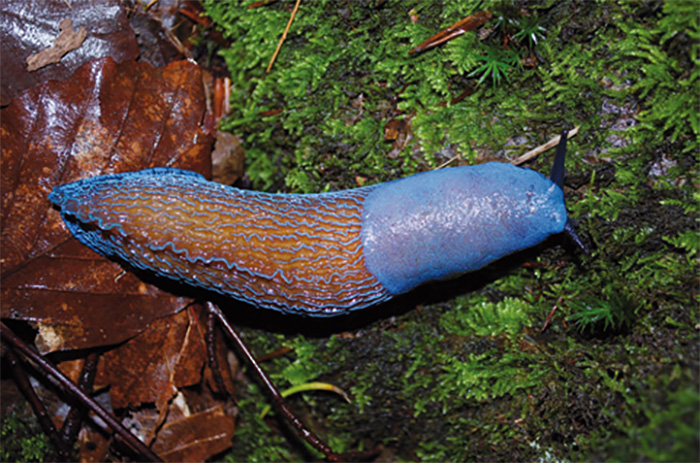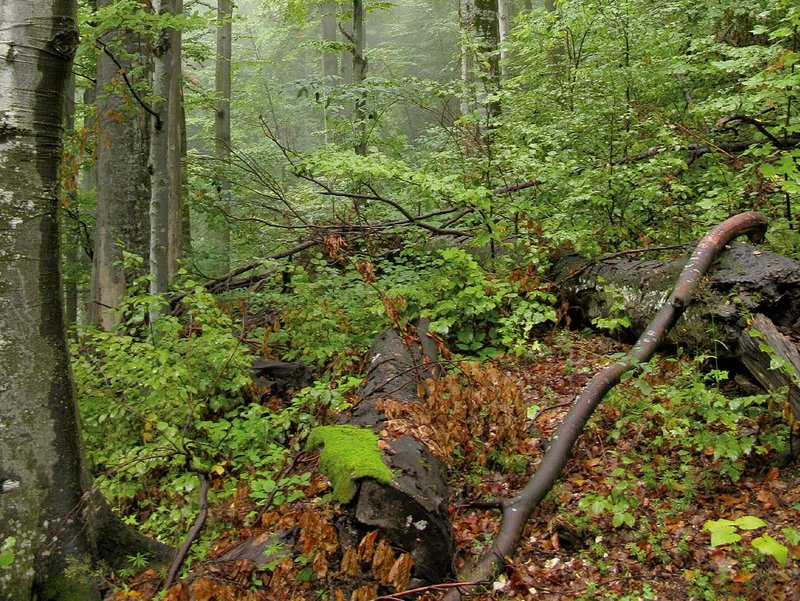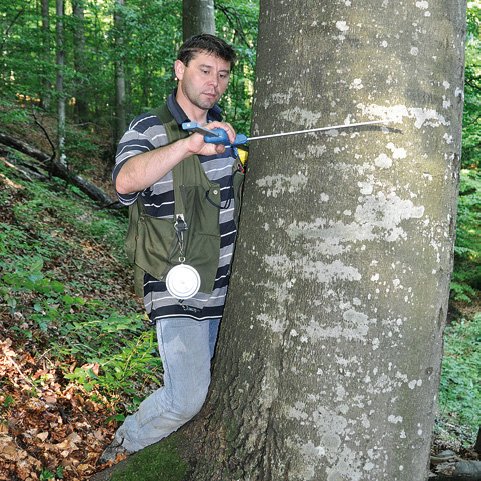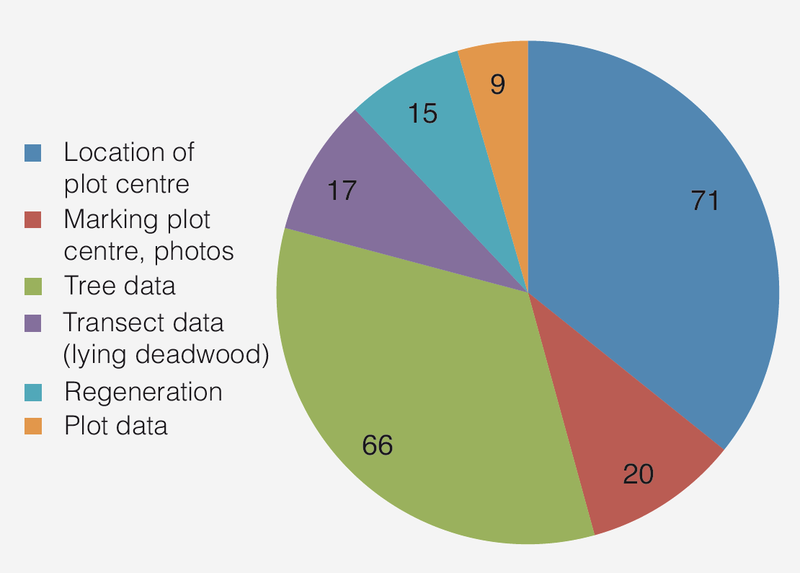International conventions and resolutions on biological diversity, sustainable forest management and climate change have led in recent decades to an increasing interest in having reference values from forests undisturbed by man. An outstanding example of such an undisturbed forest is the primeval forest of Uholka-Shyrokyi Luh within the Carpathian Biosphere Reserve (Ukraine). It is approximately 9000 ha (90 km2) in area and is thought to be the largest primeval forest of almost pure European beech (Fagus sylvatica L.).
In 2010, the Swiss Federal Institute for Forest, Snow and Landscape Research WSL, the Ukrainian National Forestry University UNFU and the Carpathian Biosphere Reserve CBR carried out a sampling inventory of the Uholka-Shyrokyi Luh forest (survey perimeter 10'282 ha) to obtain representative data for the main forest parameters. Given the remoteness of the area, long walking distances and difficult terrain, careful planning and organisation were required, as well as the logistic support of the local forest service.
Inventory method
he field work was carried out by six mixed teams of Swiss and Ukrainian students and scientists, guided by three survey leaders from Switzerland and Ukraine. Two teams together shared a leader and a cook, and lived in decentralized camps, which were moved every week to minimize the walking needed to reach the sample plots. The collaboration between the Ukrainians and Swiss worked very well and was enriching for both sides.
During the two-month sampling period, the teams assessed 314 sample plots, 500 m2 in size, laid out in clusters of two sample plots each on a systematic rectangular grid (survey perimeter 10'282 ha). The distance between the two plots in a cluster was 100 m, and the side lengths of the grid were 445 m and 1235 m. The sample plot centre was marked with a wooden pole and all trees within the sample plot were registered with their azimuth and distance from the sample plot centre. Thus, individual trees can be identified in following inventories.
All living and standing dead trees ≥ 6 cm DBH (diameter at 1.3 m above ground) within the 500 m2 circle plots were measured and assessed for features relevant for biodiversity. Lying deadwood was assessed with line-intersect sampling (3 lines each 15 m long per plot), and small trees (≥ 10 cm height and < 6 cm DBH) were surveyed on subplots consisting of three concentric circles 5, 10 and 20 m2 in area. The stand structure and any traces of anthropogenic use were assessed on a circular interpretation area of 2500 m2 around the sample plot centre.

Fig. 3: Deadwood and old trees provide important habitats for many species such as the Carpathian blue slug (Bielzia coerulans). Photo: Martin Brüllhardt
Main results
The primeval forest of Uholka-Shyrokyi Luh shows all the typical features of an old-growth forest shaped by small-scale disturbances. The structure was mainly three-layered, and most of the gaps encountered were not larger than the crown of a canopy tree. The growing stock per ha was 582 (± 14) m3 (mean ± standard error) and the deadwood volume 163 (± 8) m3. The ratio of standing to lying deadwood was 1 : 5. The maximum DBH measured was 150 cm, and 10 trees per ha had a DBH of at least 80 cm.
The density of habitat trees, i.e. living trees with features such as cracks, holes, bark damage or similar that provide microhabitats, was 150 (± 8) per ha (35% of the living trees). Of all the trees recorded, 97% were beech, although 14 other tree species were identified. All species found in the tree population ≥ 6 cm DBH were also present in the regeneration.
Traces of human presence were encountered on 19% of the assessed plots (interpretation areas), mainly in the buffer and regulated protection zone of the protected massif. Most of these traces do not affect the integrity and pristine character of the forest. Nevertheless, they imply a certain pressure exerted from the nearby settlements and from the mountain pastures.
The data obtained provide good reference values for old-growth beech forests and a valuable basis for more detailed analyses and comparisons with other old-growth and managed forests. The inventory was carried out and documented in a replicable way, and can thus be repeated if desired. The plots may also be used for other non-destructive studies, e.g. on fungi.
For detailed results see the original article (PDF)
Note on the terms "primeval", "virgin" and "old-growth" forest
We use the terms "primeval" and "virgin forest" as synonyms for a "forest undisturbed by man", i. e. where there has been no known significant human intervention, or where the last significant human intervention was so long ago that the natural species composition and processes have re-established (MCPFE 2007).
In contrast, the term "old-growth forest" may include forests previously managed but which have been left to develop naturally. They thus show some old-growth characteristics, such as mixed tree ages and development phases with senescent and dead trees, as well as standing and lying deadwood in all decay stages.
MCPFE Ministerial Conference on the Protection of Forests in Europe 2007: State of Europe’s forests 2007. The MCPFE report on sustainable forest management in Europe. MCPFE Liaison Unit Warsaw, Poland.
(TR)





![[Translate to English:] Beech branch with beechnuts](/files/_processed_/e/8/csm_bfw_buchecker_d4b0e1c000.jpg)